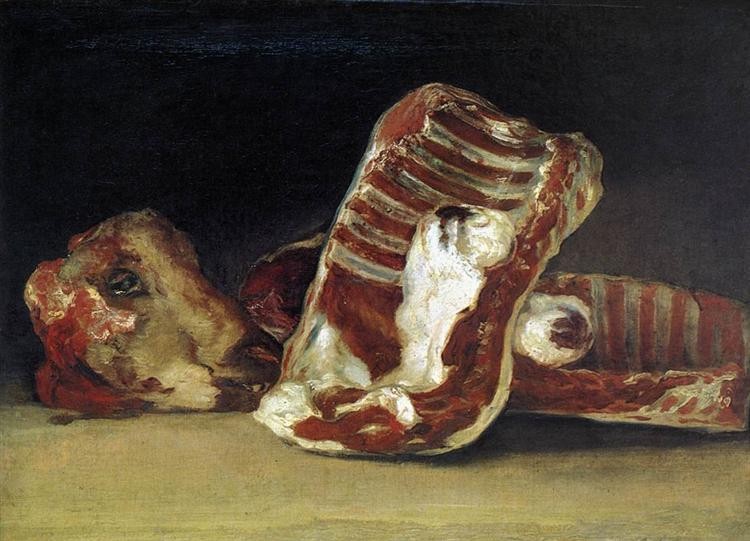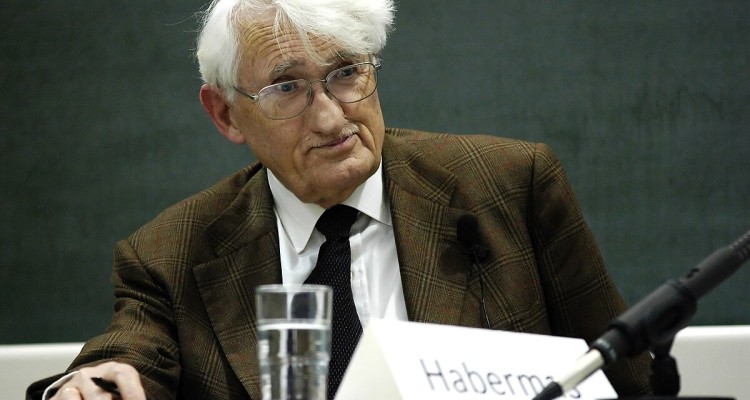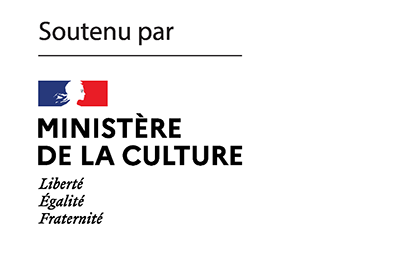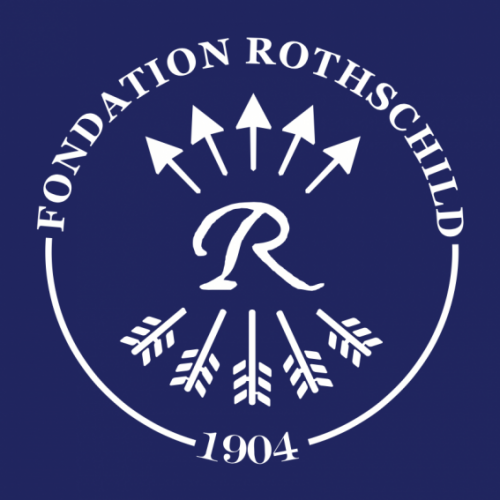The ban on ritual slaughter (shehita) has confronted Jews in Europe several times. Shai Lavi reminds us that traditional authorities have always reacted to this situation by trying to adapt to the context in which the ban was formulated – which implies that the intention behind the ban must be clearly identified. Since only the antisemitic motive condemns any compromise, it is extremely important to establish this motive before making a decision. The essay by Shai Lavi, professor of law, suggests that we would be well advised today to extend this enquiry whenever Jews are caught up in any such controversy.

On April 21, 1933, the Nazi regime passed one of its first anti-Jewish legislation in Germany – the law forbidding kosher slaughtering (shehitah) of meat. The law condemned the unnecessary suffering of animals, and was not framed as anti-Jewish, but as protecting the welfare of animals. However, one of the clauses of the law stated that animals should be stunned before being slaughtered (for example, by means of a paralyzing electric shock) so as to prevent unnecessary suffering. Despite the general terms in which it was couched, the prohibition had a direct effect on the members of the Jewish community who were punctilious about kosher slaughtering. According to halakhic tradition, an animal must be slaughtered with a sharp knife, and it is forbidden to stun it or in any way to harm the integrity of its body prior to slaughter[1].
Numerous Jewish community organizations, those that abided by the laws of kashrut and those that did not, joined the struggle against this prohibition. There was no doubt that the law was aimed not only at the Orthodox, but was intended to marginalize Jews of Germany whoever they were. And indeed, since the end of the nineteenth century, kosher slaughtering in German-speaking lands (including Switzerland and Austria) has served as a target for antisemitic parties. In present-day Europe too, Jewish slaughtering practices continue to be an object of vilification and legal restrictions with just one difference – these days most of the opposition is directed at Halal slaughter; alongside traditional antisemitism, Europe is now grappling with a disconcerting new trend of islamophobia[2].
One of the challenges facing the Jewish community at the turn of the twentieth century, which is still relevant for the beginning of the twenty first century, is the broad coalition that has coalesced against animal slaughter, and has included not only antisemites but also associations acting for the welfare of animals, who have marked Jewish slaughter as especially cruel, as well as veterinarians who are concerned about the unhygienic nature of traditional practices. Even the law passed by the Nazis was more complex in comparison. Most of the sections did not address kosher slaughter, but dealt with protecting animal welfare, and one of the clauses, that even today would be considered humane, regulated the slaughter of fish and crabs and included a prohibition on cooking them without previously stunning them. As the historical research shows, the Nazi regime’s commitment to the welfare of animals was not just a matter of lip service, but was intimately bound up with Nazi ideology, which, in this case, as in many others, combined a radicalization of bourgeois values with the sacralization of nature. Can it be said that the prohibition on slaughter was chiefly an antisemitic move? Is it correct to assume this today when organizations concerned with animal welfare, followed by several European countries, want to restrict Jewish and Muslim slaughter?
The response of the Jewish community to the Nazi legislation is of particular interest in this context. The 1933 prohibition cast a shadow on Jewish life far beyond the gastronomic restrictions or the symbolic meaning, because the absence of the supply of meat had nutritional repercussions, particularly for the aged and the sick. In clear cases of preserving life, it was halakhicly possible to permit the consumption of non-kosher meat, but what about other cases? Was it possible to find a halakhic permit that would allow for stunning an animal with an electric shock prior to its slaughter, despite this departure from tradition? One of the prominent rabbis of the day in Berlin, Rabbi Yechiel Weinberg, head of the Torah study academy for Orthodox rabbis, was asked to address the issue. He considered it of prime importance to find a way to permit stunning. However, before getting into the ins-and-outs of the matter, he first had to overcome a major halakhic stumbling block. If the prohibition on slaughter for meat was an edict directed against Jews and their traditions, it was forbidden to find a way around it. In a place where they were attempting to subvert the Jewish religion, the existing custom should not be breeched even a little, even at the cost of martyrdom for the sanctification of God’s name. In the book of responsa published by Weinberg, “Seridei Eish” [Survivors of the Fire] ‒ he miraculously survived the war ‒ there is a fascinating halakhic discussion. The Berlin rabbi refused to view the Nazi legislation as an anti-Jewish decree. The prohibition, he stated, was not directed against Jews and it would continue to exist for a long time after the end of the Nazi regime. The desire to protect animals and the casting of doubt on the humaneness of kosher slaughter are not in themselves connected to antisemitism. The fact that there are antisemites who deliberately want to prevent kosher slaughter does not change the fact that many people oppose it on moral grounds, even if – in Weinberg’s view – they are wrong. Unfortunately, Weinberg never completed his halakhic investigation. Under pressure from rival conservative rabbis from Frankfurt who acted against him, he was forced to shelve the halakhic debate that he had embarked upon, and never returned to it.

Weinberg correctly predicted the future. The problem of kosher slaughtering did not drop off the public agenda even after the end of the Second World War, and it continues to preoccupy Europe, even more intensely, at the present time. The important difference is that, today, alongside the focus of public debate on Jewish slaughtering practices is the Muslim traditional slaughtering which has similar characteristics. Nine European countries, including Switzerland, Norway, Denmark, and Belgium mandate the stunning of the animals ‒ this stands in opposition to accepted religious rites for Orthodox Jews and for many Muslim communities.
In this connection, Germany is an interesting case. Although the 1933 Nazi law for the welfare of animals remained in effect for decades after the war, the Jews were, understandably, given an exemption from this prohibition immediately after the war. However, in contrast to the Jews, the Muslims who began to migrate to Germany as early as the 1960s did not benefit from a similar exemption. Until 2012, an unequal situation prevailed in Germany, whereby Jews enjoyed rights that were not extended to Muslims. Muslims’ claims of discrimination were rejected by the German administrative and constitutional courts on various grounds – from the claim that Muslims, in contrast to the Jews, are not part of the German “Volk”; that their religion is not a recognized state religion; through the assertion that, for historical reasons, the Jews are entitled to compensation that the Muslims are not entitled to; and ending with the assertion that the prohibition on stunning animals in Islamic tradition is not unequivocal. For decades, Muslims in Germany who wanted to slaughter animals for meat, according to Halal customs, had to rely on the services of Jewish ritual slaughterers. Only in 2012, did the German Federal Constitutional Court determine that there was no justification for discriminating between Jews and Muslims and grant Muslims an exemption similar to that of the Jews. Even so, it seems as though the last word on this matter has not yet been spoken, for the administrative authorities still place obstacles in the path of traditional Muslim slaughtering, making it almost impossible in practice[3].
Germany is not the only place in which there is a debate about ritual slaughter. A recent opinion of the European Court of Human Rights in 2020 decided that the Belgian law that mandates stunning of the animal prior to its slaughter (provided that the stunning is reversible and does not kill the animal) does not violate the freedom of religion of Jews and Muslims. The main reasons that the court gave was that the law was intended to protect the animal and not to restrict religion, and also that the law does not prevent carrying out slaughter by knife, but only limits one element of it. Jews and Muslims can continue to practice ritual slaughter according to the customs of their forefathers, but must stun the animal before it breathes its last breath. The European Court had to come to grips with one major claim of the Jewish and Muslim communities in Belgium. The petitioners wanted to know how Belgium permits the hunting of animals that involves brutal killing without stunning, while it prohibits ritual slaughter. The Court rejected this claim in a ruling that seems unreasonable and discriminatory. It stated, among other things, that hunting is part of a cultural tradition and is therefore entitled to protection. The Court remained entirely indifferent to the fact that Muslim and Jewish ritual slaughter is also a cultural tradition, albeit of minorities.
In the debate about ritual slaughter, as well as in the debate about male circumcision, Jews and Muslims in Europe find themselves in a similar situation. In the face of their demands for freedom of religion and preservation of their rights as minorities before the tyranny of the majority, they have to grapple with serious claims about how they cause unnecessary suffering to defenseless creatures in the name of God, and inflict harm on the rights of children and of animals.
In response to these accusations, Jews and the Muslims make various claims. First, they challenge the degree of suffering inflicted by ritual slaughter (and by infant circumcisions). They claim that Halal and kosher ritual slaughter not only do not cause unnecessary suffering, but that they are more humane than the accepted stunning method. The slitting of the main artery in the neck brings about an immediate drop in blood pressure and loss of consciousness that prevents the suffering of the animal. This position is supported by scientist and veterinarians, but, of course, has no consensus. Another claim, mentioned above, touches on the double standard applied to Jews and Muslims. Why is hunting permitted, whereas slaughter is not, why is it permitted to breach the bodily integrity of children in cosmetic surgery treatments, or for ear-piercing, while circumcision is prohibited? A more complex claim relates to the structural deviation in the very existence of a standard of bodily integrity and a prohibition on harming it and causing even minimal suffering. According to Judaism and Islam the bodies of children enjoy greater integrity after circumcision, and ritual slaughter of animals is not less humane than killing them, about which there is no dispute in the meet-production industry. To what extent are the secular-liberal values indeed neutral as they profess to be, and to what extent is there an inherent ambivalence and discrimination against ritual practices? Are we witnessing a later revival of the Christian polemic against Jewish practices of circumcision and slaughter and is there a political theology concealed behind the language of liberal jurisprudence? Indeed, it is hard to ignore the Paulinian undertones of the debate, in which Jews and the Muslims are criticized for continuing to insist on circumcision of the flesh rather than circumcision of the heart, and on the sacrifice of animals for meat, rather than acknowledging the sacrifice of the Lamb of God.
The opposition to traditional ritual slaughter is deeply rooted in Christian culture and also has a shameful history in the twentieth century. But is opposition to kosher slaughter and Halal slaughter an expression of antisemitism and islamophobia? The answer is simple in cases where the opposition to kosher and Halal slaughter is accompanied by additional expressions against Jews and Muslims. An example of this is the assertion that Muslims are very violent, and the proof of this is the barbaric way their religion prescribes the slaughter of animals. But what about more complex cases? Can it be said that the judges of the European Court of Human Rights are not only mistaken, but also that they are antisemitic and islamophobic? Can this serious accusation be leveled against activists for animal rights who have made it their mission to minimize the suffering inflicted on animals, only because they have included Jewish and Muslim slaughter practices on their list of causes requiring change? And finally, in the public debate on the question of slaughter, is it appropriate to respond to the claims of those opposing it that their position is tainted by antisemitism and islamophobia? What is the way to grapple with problems of this kind?
The simple response to the more complex cases is that the matter is context-dependent. This, of course, is a correct answer, but it does not provide us with the tools to consider what specifically in the context is relevant. Moreover, the matter of ritual slaughter is but one case in which the question of defining antisemitism and determining who is an antisemite arises. A comparable question has recently come to the fore concerning the criticism of Zionism and the State of Israel. What makes the question “Who is an antisemite?” so complicated at times and difficult to answer unequivocally? What is the source of the difficulty in this and other similar cases, and to what extent is this difficulty characteristic of contemporary antisemitism? These are complex questions that can be addressed here only briefly.
It is important to distinguish between assertions that are not, in themselves, antisemitic, but are liable to serve antisemitic interests and assertions that are founded in antisemitism.
One widespread contention is that, in the past, it was easy to identify antisemites and expressions of antisemitism. Antisemites did not hesitate to express their racist positions and did not need to hide behind humanitarian and universal claims. Today, however, the antisemitic discourse has become more genteel and concealed. In the aftermath of the Second World War, it has become harder to express antisemitism explicitly in the political mainstream. Overt antisemitism has gone underground, and, in its stead, its expressions are more subtle; it is no longer possible to revile Jews with blood libels about murdering Christian children for religious rituals, as had been widespread in past centuries and diminished in the twentieth century. This vulgar style of antisemitism went underground and has been replaced by coded antisemitism, hidden behind a mask of legitimate considerations. And yet, concealed antisemitism is no less dangerous than explicitly expressed antisemitism and should be combated no less vigorously than the openly expressed, brazen antisemitism.
For this reason, it is important to distinguish between assertions that are not, in themselves, antisemitic, but are liable to serve antisemitic interests and assertions that are founded in antisemitism. This is a distinction that historians may find hard to make for good reasons, but it is one that is necessary when taking a stand in a public debate. The claim that Jews control the world is openly antisemitic, as is the claim that the Rothschilds and the Soroses – which serve as code words for Jews and tycoons – control the world. Matters are different when the claim is that Jewish ritual animal slaughter infringes on animal rights, or in an entirely different context, that Israel’s control over the Palestinians infringes on human rights. These claims must be examined in their own right and in specific contexts. If the motivations for expressing them are antisemitic, the people expressing them can be attacked on the basis of their motivation, but not on the basis of their claims alone. The motivations must be assessed independently of the claims themselves.
Behind this position is a strategic insight that anyone who holds the struggle against antisemitism dear must take into account. What is the best way to combat antisemitism? Should activists on behalf of animal rights be accused of antisemitism, should the courts of human rights be accused of antisemitism, thereby alienating, from the struggle against antisemitism, broad circles of people whose position might be mistaken but who are far from being anti-Semites? Or should the public debate be opened to refute controversial positions? Over the course of time the struggle to combat antisemitism will profit only if it is focused, consensual, and remains above the political fray. In a world in which it is easier for women than for men to set the rules of proper gender conduct, and for blacks easier than for whites to set the tone on racism, it is the responsibility of Jews to say not only what antisemitism is, but also what, even if dubious, is prima facie not antisemtism.
The Nazis were indubitably antisemitic, and their objection to kosher ritual slaughter stemmed from antisemitic motivations. There is no lack of evidence of this, and no one could think otherwise. Conversely, the decision made by the European Court of Human Rights can be considered erroneous, and even biased against non-Christian minorities, and that is the reason, despite its “neutral” language, that the opinion discriminates against Jews and Muslims. But it would be wrong to label the Court’s decision antisemitic or islamophobic. Such a judgment would bring to an end a dispute that is worthy of having. The debate is not one between the Sons of Light and the Sons of Darkness, as Rabbi Weinberg observed already in 1933. Presenting the dispute as such does not only miss the point, it also damages the struggle against antisemitism by making the latter into nothing more than another plaything in the cultural war.
Shai Lavi
Faculty of Law, University of Tel Aviv.
Director, Van Leer Jerusalem Institute
Notes
| 1 | For a general history of the debate, see Robin Judd, Contested Rituals : Circumcision, Kosher Butchering, and Jewish Political Life in Germany, 1843-1933. |
| 2 | For a historical comparison, see Shai Lavi, “Unequal Rites: Jews, Muslims and the History of Ritual Slaughter in Germany,” in Juden und Muslime in Deutschland: Recht, Religion, Identitaet, Jose Brunner and Shai Lavi (eds.) (Wallstein Verlag), pp. 164-184, 2009 |
| 3 | Shai Lavi, “Der Islam zwischen christlicher Tradition und jüdischer Geschichte. Das Beispiel ritueller Tierschlachtung in Deutschland nach 1945,” in Religionskontroversen im Verfassungsstaat, Hans Kippenberg and Astrid Reuter (eds.), (Vandenhoweck & Ruprecht), pp. 393-416, 2010. |









